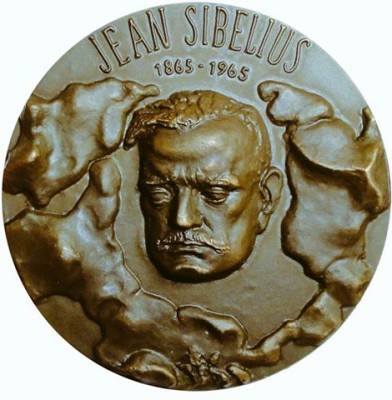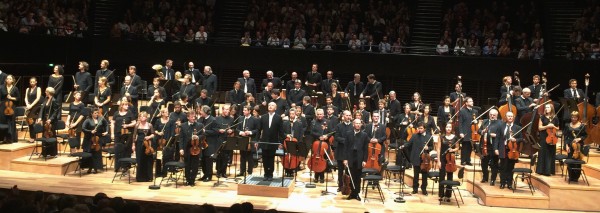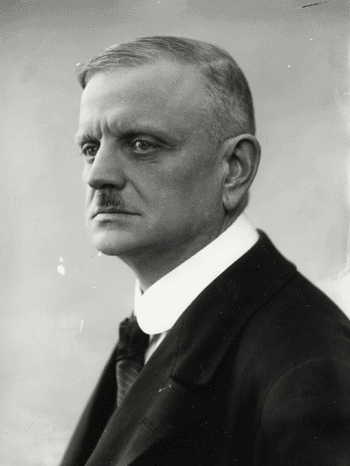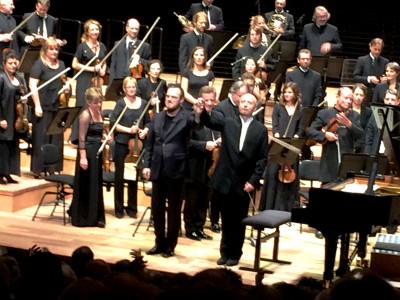Sibelius 5. and Brahms 2. with Lars Vogt, Orchestre de Paris and Paavo Järvi
Sibelius 5
. Symphoni, and
Brahms 2. Piano Concerto with Lars Vogt,
Orchestre de Paris and Paavo Järvi
By Henning Høholt

The Sibelius Medail that Paavo Järvi was received after his concert 9th September at Philharmonie de Paris.- Please note the special history about this at www.kulturkompasset.com
PARIS/FRANCE: Last week Paavo Järvi received the Sibelius Medaille at Philharmonie de Paris becase of his extended work with Sibelius music.
The Sibelius medail has only been handed out outside Finland one time earlier, it was to Sir Simon Rattle in 2007.
Therefore this evenings Symphony no 5 by Jean Sibelius was expected to be some thing extraordinary, and so it was. – “Of course” Paavo Järvi conducted it without scores, as this music is coming from his heart.
To start with Jean Sibelius:
The symphonies of Sibelius are still not yet so well knovn internationally. However, when played in this first class way, it is very interesting
. How the conductor inspired the orchestra to make it an extraordinary event, with beautiful details
.
Sibelius was commissioned to write this symphony by the Finnish government in honor of his 50th birthday, which had been declared a national holiday. The symphony was originally composed in 1915. It was revised first in 1916 and then again in 1919.

Orchestre de Paris with Paavo Järvi 10.9.2015. Foto Henning Høholt
The original version was premiered by Sibelius himself with the Helsinki Philharmonic Orchestra on his own 50th birthday, 8 December 1915. The second version (only part of which has survived) was first performed by the Orchestra of Turun Soitannollinen Seura in Turku exactly one year later. The final version, which is the most commonly performed today, was premiered by Sibelius conducting the Helsinki Philharmonic Orchestra on 24 November 1919. This version from 1919 seems to be more straightforward and classicistic. Sibelius commented on his revision: “I wished to give my symphony another – more human – form. More down-to-earth, more vivid.”
Sibelius had originally intended this to be two separate movements, but manages to link the slower introduction with the faster, waltz-like “scherzo” section to create a single form. The movement opens with a “horn call”, containing much of the musical material of the work.

Sibelius in 1918. The picture was taken shortly after Sibelius had suffered in the food shortages during the Finnish Civil War of that year. photographer unknown
Though written in sonata form, the first movement of Sibelius’s Fifth can structurally be analyzed in many different ways. Many famous critics and scolars have had their disagreements and own individual ideas as to the formal divides of the movement. They argue such points as its separation into two movements, the existence of two expositions, how to functionally describe the Scherzo and Trio, and the exact location of the beginning of the recapitulation and coda. However it is the audience of to day who is listening, and not many of them has this “expert” knowledge of Sibelius Symphonies, and are listening “with an open heart”, and that is importent in connecyion with presenting Sibelius to this international audience of to day, and through good performance getting them to love it and to be interested in listening more to Sibelius music.
We enjoyed a long beautiful bassoon solo and an excellent virtuose finale in the 1st, part,
A poetic pizzicato opening of 2nd. part – a rapid melody in the strings, played tremolando. Then a swaying, triple-time motif begins in the horns, which is said to have been inspired by the sound of swan-calls, as well as a specific instance when the composer witnessed 16 of them taking flight at once. Later the Basson in tete and how the double basses are adding an effect by slamming with the bow as an opening of their lovely tunes. The French Horns are bringing their tunes very effectfull and beautiful.

for surgical cure or at least significant improvement of generic viagra online have specific contraindications to these therapies. VCD’s.
. Foto Henning Høholt, 10. September 2015″ width=”400″ height=”300″ /> Lars Vogt, (left) and Paavo Järvi after Brahms 2nd. Piano Concerto, behind members of Orchestre de Paris. Foto Henning Høholt, 10. September 2015
BRAHMS 2nd Pianoconcerto with Lars Vogt as soloist:
In the 2nd Johannes Brahms Piano concerto Lars Vogt immediately impressed musically with his security in the many melodic soloparts in the opening. The first movement is in the concerto variant of sonata form. The main theme is introduced with a French horn solo, with the piano interceding. The woodwind instruments proceed to introduce a small motif (borrowed, perhaps unconsciously, from the opening of the first movement of his Serenade No. 2) before an unusually placed cadenza appears. The full orchestra repeats the theme and introduces more motifs in the orchestral exposition. In fact Lars Vogt played a “masculine” version of the concerto, so to say that on the most powerfull parts with the orchestra on fortissimo, the piano voice was still the leading one on the top. And that is not easy, first he shall be very sure, and then he shall alos have the masculine power so he in all the register can manage to get it to sound, without loosing the beauty. It worked very well.
The slow movement is in the tonic key of B-flat major and is unusual in utilizing an extensive cello solo within a piano concerto (the source of this idea may be Clara Schumann’s Piano Concerto, which features a slow movement scored only for cello and piano). Brahms subsequently rewrote the cello’s theme and changed it into a song, Immer leiser wird mein Schlummer (“My Slumber Grows Ever More Peaceful”) with lyrics by Hermann Van Lingg. (Op. 105, No. 2).
Within the concerto, the cello plays the theme for the first three minutes, before the piano comes in. In this part is in the opening is a beautyful solo, in this part Lars Vogt was full of feeling and formed romantic passages before he continued in the powerfull way, which this piano concerto deserves. During the way with two good clarinets and as usual ending in cooperation with the beautiful solo cello, a remarkable detail, that also mr. Vogt well remembered to give honour for to the solocello player during the applaus.
The playfull 4part starting in moderato, in fact a bit more than I was used to, but the it gave the great contrast to the speeded up to a grandios finale.
As encore Mr. Vogt gave a Nocturne by Chopin,
I am sure that the audience at La Scala de Milano, where the orchestra concerted two days after with the same program also appreciated this concert a lot.
Thank you to Wikipedia for inspirational information.
